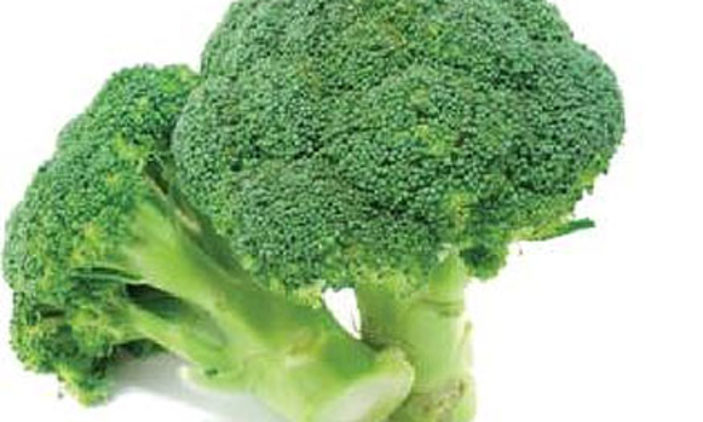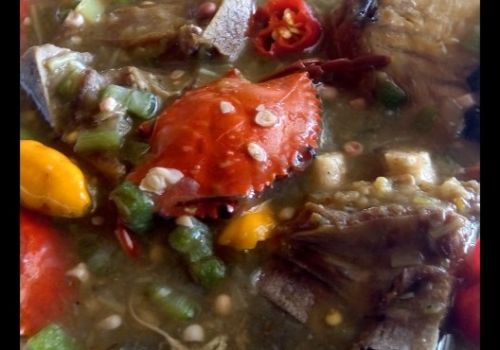“It is best to take them as salads,” we advise. “Most of the components can’t withstand high temperatures as they make them inactive.”
For blood formation, Ssempijja recommends foods rich in folic acid, zinc, copper and phosphorous. These include; cabbage, lettuce, cornflower and spinach. Others are herbs including hybiscus and red beet roots.
Mugisha says lean red meat and liver are also rich in iron, which helps in the formation of blood.
What you need to know before you donate blood
Two weeks prior to blood donation, it is advisable to increase intake of iron rich foods such as red meat, beans and dark green vegetables like spinach.
The night before, one should have a good night’s rest — at least two hours before the donation. Also have something light to eat and drink extra fluids the day before and on the day of donation.
Furthermore, on the day of donation, avoid fatty foods, as these appear in the blood several hours after eating and can affect the tests carried out on the blood.
“The materials we use to test the blood for presence of certain infections are sensitive; they can easily mistake the lipids for presence of these infections,” says a nurse at the blood bank.
Following the donation, one should rest for at least five to 10 minutes after removal of the needle. In case they feel light headed, they should lie down until the feeling passes, or notify a medical officer in case it intensifies.
Drink plenty of fluids over the following 24 hours to rehydrate, the experts recommend.
The blood is collected into a unit pack, which contains a chemical compound known as anti-coagulant, which preserves and prevents blood from clotting.
It is then transported in cool boxes at temperatures between two and eight degrees to the blood bank. Blood is drawn from each unit pack and tested for Hepatitis B, C, HIV and syphilis — as per the World Health Organisations guidelines — as these are the most likely diseases to be transmitted through blood.
However, in cases of unusual epidemics such as Ebola and bird flu, the blood is tested for these infections too. The blood samples that pass the tests are labelled and stored.
And because blood is a human tissue, it has a shelf life, which is 35 days, when stored between two and eight degrees. However, blood can be frozen when buffered with a compound called glycerol, at a temperature of about -65oC, giving it a shelf life of up to 10 years, but this is very costly.
- See more at: http://www.newvision.co.ug/new_vision/news/1323611/foods-boost-blood-levels#sthash.uMo3fMf1.dpuf“It is best to take them as salads,” he advises. “Most of the components can’t withstand high temperatures as they make them inactive.”
For blood formation, Ssempijja recommends foods rich in folic acid, zinc, copper and phosphorous. These include; cabbage, lettuce, cornflower and spinach. Others are herbs including hybiscus and red beet roots.
Mugisha says lean red meat and liver are also rich in iron, which helps in the formation of blood.
What you need to know before you donate blood
Two weeks prior to blood donation, it is advisable to increase intake of iron rich foods such as red meat, beans and dark green vegetables like spinach.
The night before, one should have a good night’s rest — at least two hours before the donation. Also have something light to eat and drink extra fluids the day before and on the day of donation.
Furthermore, on the day of donation, avoid fatty foods, as these appear in the blood several hours after eating and can affect the tests carried out on the blood.
“The materials we use to test the blood for presence of certain infections are sensitive; they can easily mistake the lipids for presence of these infections,” says a nurse at the blood bank.
Following the donation, one should rest for at least five to 10 minutes after removal of the needle. In case they feel light headed, they should lie down until the feeling passes, or notify a medical officer in case it intensifies.
Drink plenty of fluids over the following 24 hours to rehydrate, the experts recommend.
The blood is collected into a unit pack, which contains a chemical compound known as anti-coagulant, which preserves and prevents blood from clotting.
It is then transported in cool boxes at temperatures between two and eight degrees to the blood bank. Blood is drawn from each unit pack and tested for Hepatitis B, C, HIV and syphilis — as per the World Health Organisations guidelines — as these are the most likely diseases to be transmitted through blood.
However, in cases of unusual epidemics such as Ebola and bird flu, the blood is tested for these infections too. The blood samples that pass the tests are labelled and stored.
And because blood is a human tissue, it has a shelf life, which is 35 days, when stored between two and eight degrees. However, blood can be frozen when buffered with a compound called glycerol, at a temperature of about -65oC, giving it a shelf life of up to 10 years, but this is very costly.
- See more at: http://www.newvision.co.ug/new_vision/news/1323611/foods-boost-blood-levels#sthash.uMo3fMf1.dpuf“It is best to take them as salads,” he advises. “Most of the components can’t withstand high temperatures as they make them inactive.”
For blood formation, Ssempijja recommends foods rich in folic acid, zinc, copper and phosphorous. These include; cabbage, lettuce, cornflower and spinach. Others are herbs including hybiscus and red beet roots.
Mugisha says lean red meat and liver are also rich in iron, which helps in the formation of blood.
What you need to know before you donate blood
Two weeks prior to blood donation, it is advisable to increase intake of iron rich foods such as red meat, beans and dark green vegetables like spinach.
The night before, one should have a good night’s rest — at least two hours before the donation. Also have something light to eat and drink extra fluids the day before and on the day of donation.
Furthermore, on the day of donation, avoid fatty foods, as these appear in the blood several hours after eating and can affect the tests carried out on the blood.
“The materials we use to test the blood for presence of certain infections are sensitive; they can easily mistake the lipids for presence of these infections,” says a nurse at the blood bank.
Following the donation, one should rest for at least five to 10 minutes after removal of the needle. In case they feel light headed, they should lie down until the feeling passes, or notify a medical officer in case it intensifies.
Drink plenty of fluids over the following 24 hours to rehydrate, the experts recommend.
The blood is collected into a unit pack, which contains a chemical compound known as anti-coagulant, which preserves and prevents blood from clotting.
It is then transported in cool boxes at temperatures between two and eight degrees to the blood bank. Blood is drawn from each unit pack and tested for Hepatitis B, C, HIV and syphilis — as per the World Health Organisations guidelines — as these are the most likely diseases to be transmitted through blood.
However, in cases of unusual epidemics such as Ebola and bird flu, the blood is tested for these infections too. The blood samples that pass the tests are labelled and stored.
And because blood is a human tissue, it has a shelf life, which is 35 days, when stored between two and eight degrees. However, blood can be frozen when buffered with a compound called glycerol, at a temperature of about -65oC, giving it a shelf life of up to 10 years, but this is very costly.
- See more at: http://www.newvision.co.ug/new_vision/news/1323611/foods-boost-blood-levels#sthash.uMo3fMf1.dpuf
For blood formation, Ssempijja recommends foods rich in folic acid, zinc, copper and phosphorous. These include; cabbage, lettuce, cornflower and spinach. Others are herbs including hybiscus and red beet roots.
Mugisha says lean red meat and liver are also rich in iron, which helps in the formation of blood.
What you need to know before you donate blood
Two weeks prior to blood donation, it is advisable to increase intake of iron rich foods such as red meat, beans and dark green vegetables like spinach.
The night before, one should have a good night’s rest — at least two hours before the donation. Also have something light to eat and drink extra fluids the day before and on the day of donation.
Furthermore, on the day of donation, avoid fatty foods, as these appear in the blood several hours after eating and can affect the tests carried out on the blood.
“The materials we use to test the blood for presence of certain infections are sensitive; they can easily mistake the lipids for presence of these infections,” says a nurse at the blood bank.
Following the donation, one should rest for at least five to 10 minutes after removal of the needle. In case they feel light headed, they should lie down until the feeling passes, or notify a medical officer in case it intensifies.
Drink plenty of fluids over the following 24 hours to rehydrate, the experts recommend.
The blood is collected into a unit pack, which contains a chemical compound known as anti-coagulant, which preserves and prevents blood from clotting.
It is then transported in cool boxes at temperatures between two and eight degrees to the blood bank. Blood is drawn from each unit pack and tested for Hepatitis B, C, HIV and syphilis — as per the World Health Organisations guidelines — as these are the most likely diseases to be transmitted through blood.
However, in cases of unusual epidemics such as Ebola and bird flu, the blood is tested for these infections too. The blood samples that pass the tests are labelled and stored.
And because blood is a human tissue, it has a shelf life, which is 35 days, when stored between two and eight degrees. However, blood can be frozen when buffered with a compound called glycerol, at a temperature of about -65oC, giving it a shelf life of up to 10 years, but this is very costly.
- See more at: http://www.newvision.co.ug/new_vision/news/1323611/foods-boost-blood-levels#sthash.uMo3fMf1.dpuf“It is best to take them as salads,” he advises. “Most of the components can’t withstand high temperatures as they make them inactive.”
For blood formation, Ssempijja recommends foods rich in folic acid, zinc, copper and phosphorous. These include; cabbage, lettuce, cornflower and spinach. Others are herbs including hybiscus and red beet roots.
Mugisha says lean red meat and liver are also rich in iron, which helps in the formation of blood.
What you need to know before you donate blood
Two weeks prior to blood donation, it is advisable to increase intake of iron rich foods such as red meat, beans and dark green vegetables like spinach.
The night before, one should have a good night’s rest — at least two hours before the donation. Also have something light to eat and drink extra fluids the day before and on the day of donation.
Furthermore, on the day of donation, avoid fatty foods, as these appear in the blood several hours after eating and can affect the tests carried out on the blood.
“The materials we use to test the blood for presence of certain infections are sensitive; they can easily mistake the lipids for presence of these infections,” says a nurse at the blood bank.
Following the donation, one should rest for at least five to 10 minutes after removal of the needle. In case they feel light headed, they should lie down until the feeling passes, or notify a medical officer in case it intensifies.
Drink plenty of fluids over the following 24 hours to rehydrate, the experts recommend.
The blood is collected into a unit pack, which contains a chemical compound known as anti-coagulant, which preserves and prevents blood from clotting.
It is then transported in cool boxes at temperatures between two and eight degrees to the blood bank. Blood is drawn from each unit pack and tested for Hepatitis B, C, HIV and syphilis — as per the World Health Organisations guidelines — as these are the most likely diseases to be transmitted through blood.
However, in cases of unusual epidemics such as Ebola and bird flu, the blood is tested for these infections too. The blood samples that pass the tests are labelled and stored.
And because blood is a human tissue, it has a shelf life, which is 35 days, when stored between two and eight degrees. However, blood can be frozen when buffered with a compound called glycerol, at a temperature of about -65oC, giving it a shelf life of up to 10 years, but this is very costly.
- See more at: http://www.newvision.co.ug/new_vision/news/1323611/foods-boost-blood-levels#sthash.uMo3fMf1.dpuf“It is best to take them as salads,” he advises. “Most of the components can’t withstand high temperatures as they make them inactive.”
For blood formation, Ssempijja recommends foods rich in folic acid, zinc, copper and phosphorous. These include; cabbage, lettuce, cornflower and spinach. Others are herbs including hybiscus and red beet roots.
Mugisha says lean red meat and liver are also rich in iron, which helps in the formation of blood.
What you need to know before you donate blood
Two weeks prior to blood donation, it is advisable to increase intake of iron rich foods such as red meat, beans and dark green vegetables like spinach.
The night before, one should have a good night’s rest — at least two hours before the donation. Also have something light to eat and drink extra fluids the day before and on the day of donation.
Furthermore, on the day of donation, avoid fatty foods, as these appear in the blood several hours after eating and can affect the tests carried out on the blood.
“The materials we use to test the blood for presence of certain infections are sensitive; they can easily mistake the lipids for presence of these infections,” says a nurse at the blood bank.
Following the donation, one should rest for at least five to 10 minutes after removal of the needle. In case they feel light headed, they should lie down until the feeling passes, or notify a medical officer in case it intensifies.
Drink plenty of fluids over the following 24 hours to rehydrate, the experts recommend.
The blood is collected into a unit pack, which contains a chemical compound known as anti-coagulant, which preserves and prevents blood from clotting.
It is then transported in cool boxes at temperatures between two and eight degrees to the blood bank. Blood is drawn from each unit pack and tested for Hepatitis B, C, HIV and syphilis — as per the World Health Organisations guidelines — as these are the most likely diseases to be transmitted through blood.
However, in cases of unusual epidemics such as Ebola and bird flu, the blood is tested for these infections too. The blood samples that pass the tests are labelled and stored.
And because blood is a human tissue, it has a shelf life, which is 35 days, when stored between two and eight degrees. However, blood can be frozen when buffered with a compound called glycerol, at a temperature of about -65oC, giving it a shelf life of up to 10 years, but this is very costly.
- See more at: http://www.newvision.co.ug/new_vision/news/1323611/foods-boost-blood-levels#sthash.uMo3fMf1.dpuf


